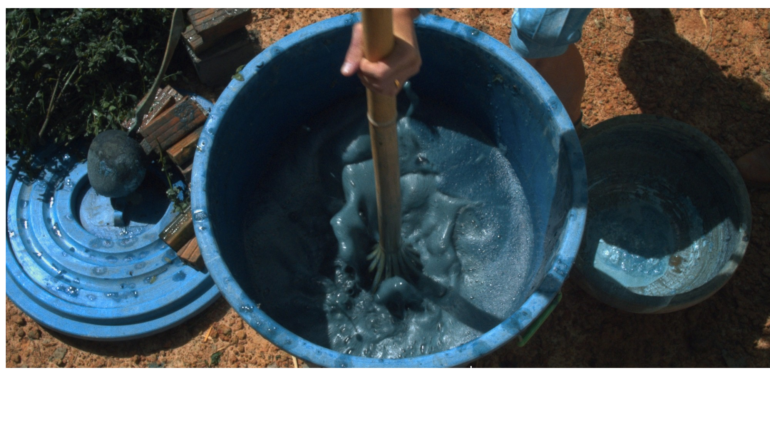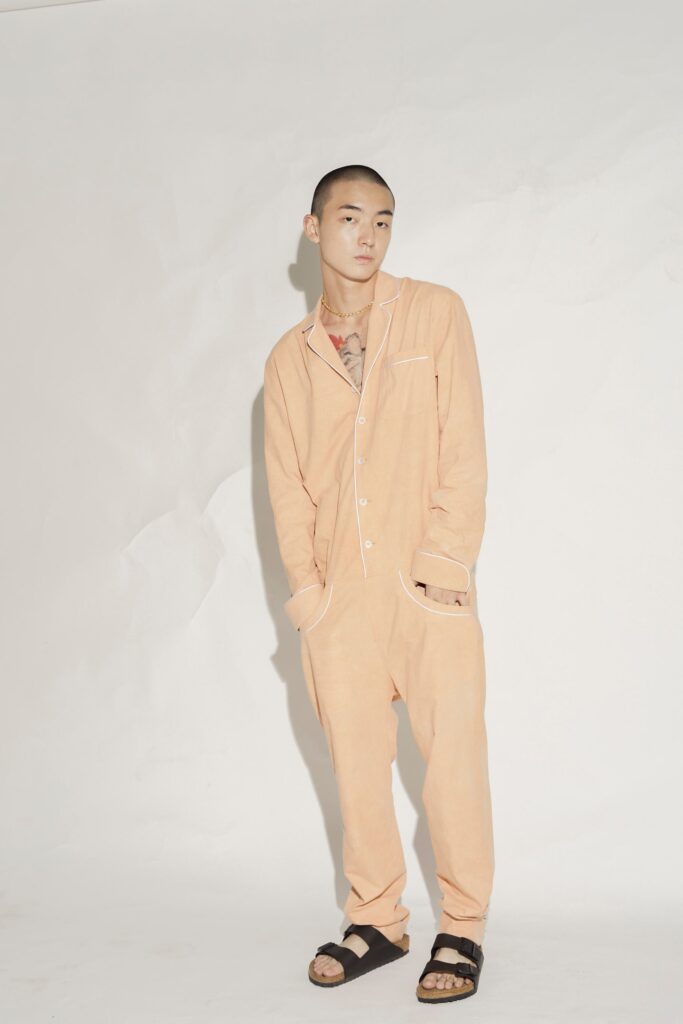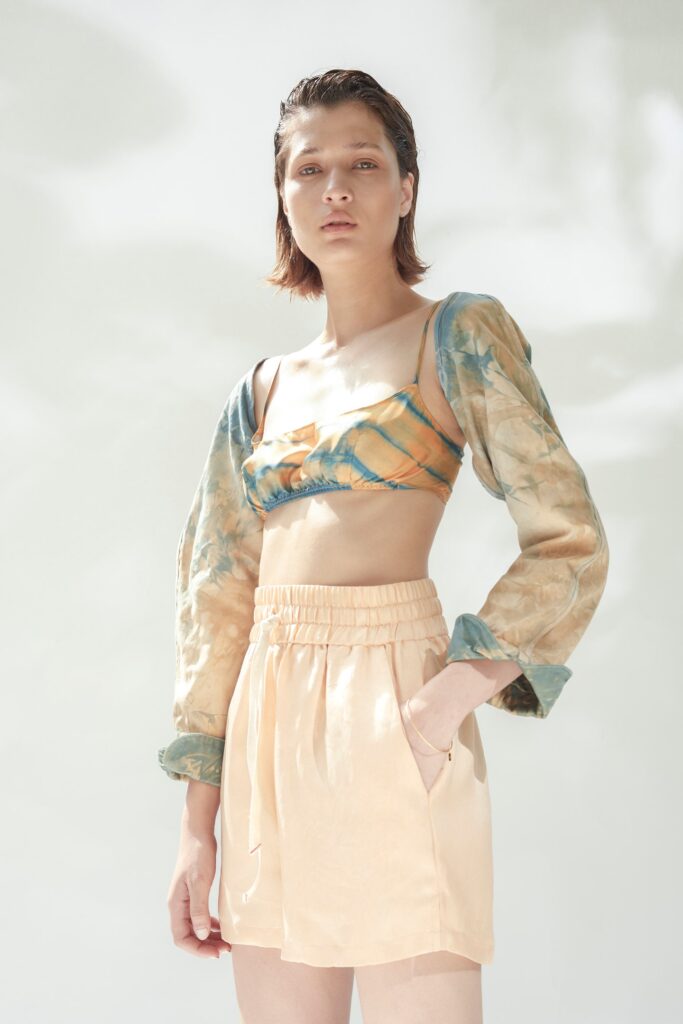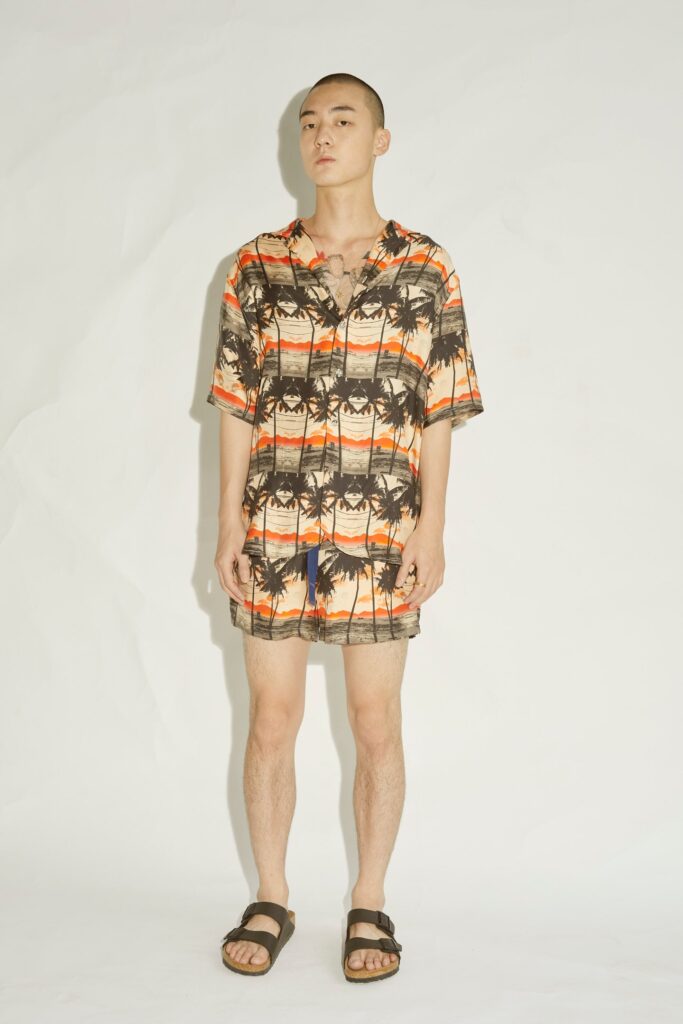Founded in 2016, Philip Huang blends ancient Thai knowledge and modern design. From indigenous wisdom come techniques to create on organic fabrics, tie-dye patterns with natural plant-based dyes. The result is modern, versatile clothing that blends know-how passed down through generations with the expectations and aesthetics of contemporary life.
A JOURNEY INTO ANCIENT LOCAL KNOWLEDGE
In 2015, founders Philip and Chomwan embarked on a journey to find the famous dyers of Sakon Nakhon. Welcomed by the family of Mann, a “master dyer” capable of creating 56 shades of indigo, he helped them create their first tub of color.
Otherwise known as Isan, this region of northeast Thailand is the poorest area but with the greatest wealth of indigo and craft knowledge. While the men cultivate the rice fields, the women weave and keep alive the ancient technique of indigo dyeing.
The “Indigo Grandmas“, wise grandmothers guardians of this ancient art, are able to extract the purest blue from indigo plants and other natural materials such as red clay, rosewood, tree bark, and lac (mites that live on trees). Weaving fine fabrics such as hand-pulled cotton and silk, they create the most intricate Ikat patterns.
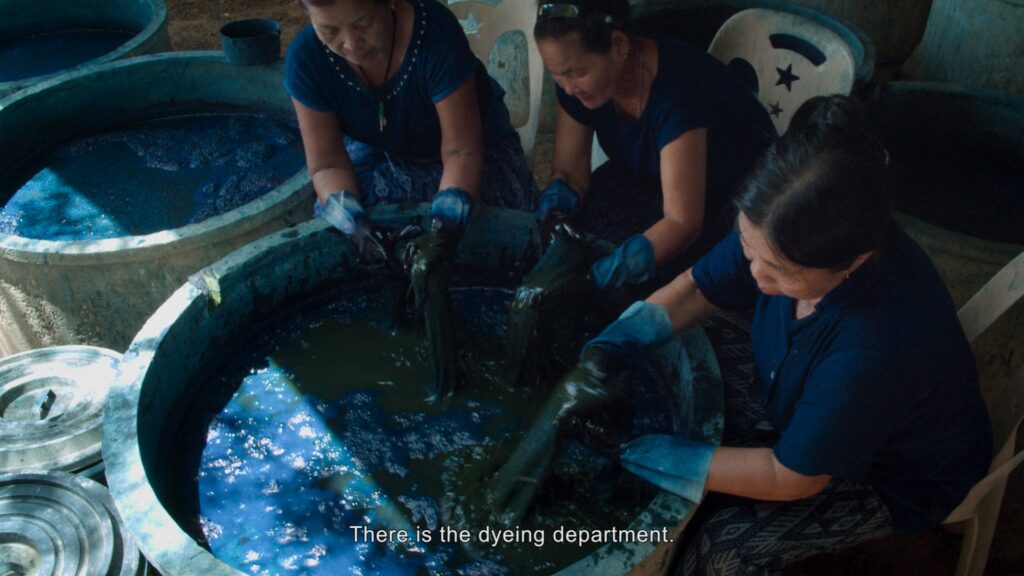
Presented as part of the special project ‘The Sustainable Style‘ of Pitti Connect, the first digital edition of Pitti Uomo, the movie Finding Oasis shows the Grandmas at work.
These valuable skills learned from elders and honed by years of practice are passed down in the field to the next generation. Now young dyers are carrying on this ancient craft. The last two decades have seen indigo dyeing evolve beyond the small artisanal industry, so much so that cotton dyed in this way is certified by Protected Geographical Indication.
FROM PLANT TO DYE TO FABRIC
Used as “trade coins”, for thousands of years, it is the leaves and stems that produce the natural dye “blue indigo”. Soaked overnight in water and red lime, they dye the tub copper in color. Indigo Grandmas remove the leaves and “beat” them, extracting a deep, intense blue color. The blue liquid is left to sit for another 24 hours, after which it is filtered through a muslin cloth.
The thick paste remaining from the filtration undergoes a fermentation process in which water, clay, alcohol (rum or vodka), and fruit (tamarind juice or apple cider) are added. Skilled dyers immerse the fabrics in the tub with the dye and gently massage them, and once extracted they remove the excess liquid. As soon as it comes out of the tub, the fabric is green and becomes “blue indigo” only after “breathing” oxygen for a few minutes. For a darker shade, simply repeat the process, until the desired shade is achieved.
The last step, wash the fabric several times until the water runs clear.
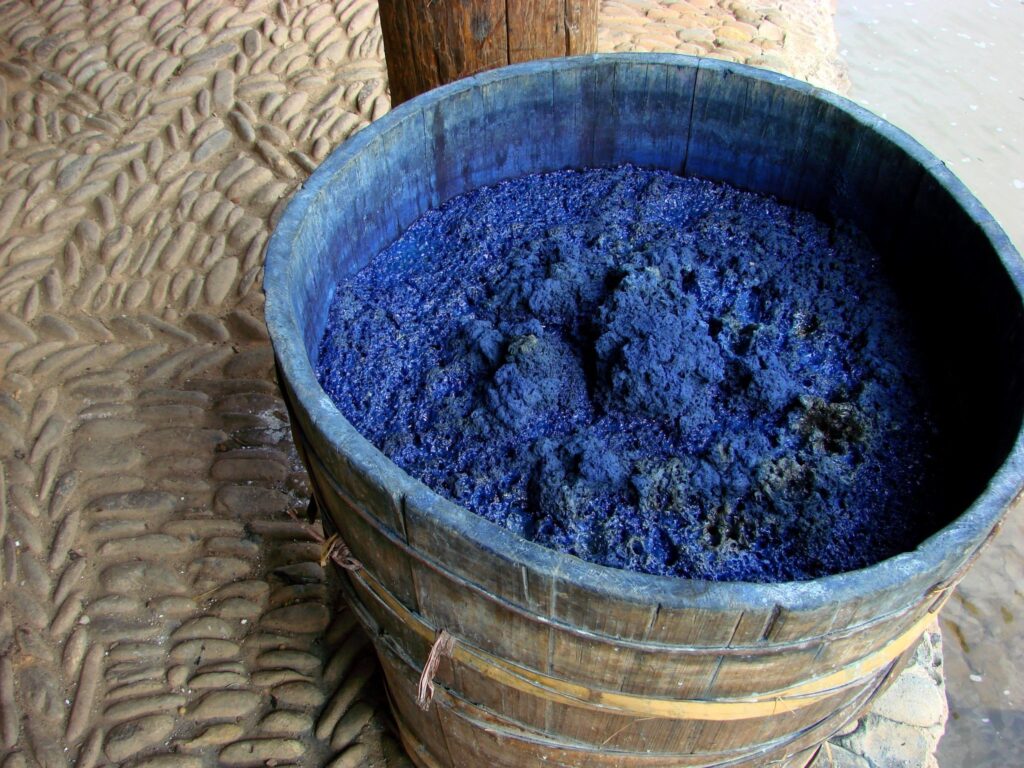
It results in a naturally colored, antibacterial, antimicrobial, and UV-protective fabric thanks to indigo’s refreshing and soothing properties that blend ancient knowledge with modern design.
TIE-DYE GRANDMOTHERS FOR THE S/S 21 COLLECTION
The design philosophy of Philip Huang’s capsule collections is to blend ancient Thai knowledge with modern design, minimizing textile waste.
In the workshops in Bangkok and Brooklyn, ancient knowledge is refined through constant dialogue and collaboration with Isan dyers and weavers.
Philip Huang’s spring-summer 2021 collection, therefore, mixes ancient knowledge with modern design. Double-breasted jackets without lapels are proposed in a delicate tie-dye together with shirts reminiscent of a safari jacket. The shirt-Bermuda suits are instead characterized by tropical prints or soft pastel tones.
Tie-dye is also chosen for an overcoat worn with soft pants in organic canvas, as well as sleeveless jackets. The latter are the clearest example of the fusion of different traditions: a thick seam along the neck is the buttoning that replaces the lapels. The same is true for the double-breasted black suit, which takes up this concept in a refined and fresh way.
There are two new colors derived from the knowledge of wise grandmothers. Dune, which comes from the mud of Sakon Nakhon, and Moonless, a mixture of indigo and blackberries.
pH.Lab: LEARNING FROM THE PAST TO LOOK TO THE FUTURE
At the core of Philip Huang’s mission has always been a willingness to learn, collaborate and share. To safeguard the knowledge that the Indigo Grandmas have taught them, so that it can spread beyond their villages, creating an alternative source of income and preserving it for future generations.
And it is Philip Huang himself who is experimenting with indigo and other natural dyes, and sharing this knowledge and traditional techniques through a series of IGTVs on the brand’s profile.
Learn from the past, look to the future and blend it with current innovations. Mixing ancient knowledge with contemporary design for clothes suited to the needs of today’s life. This is the mission of pH.Lab. Since 2019, Philip Huang’s research and development project has been supporting its community by allocating a portion of the proceeds to local associations. Among them, the Fatima Self-Help Center in Bangkok. Financial support to women from families in need who hand make all the decorations and stitching of Philip Huang’s clothes.


